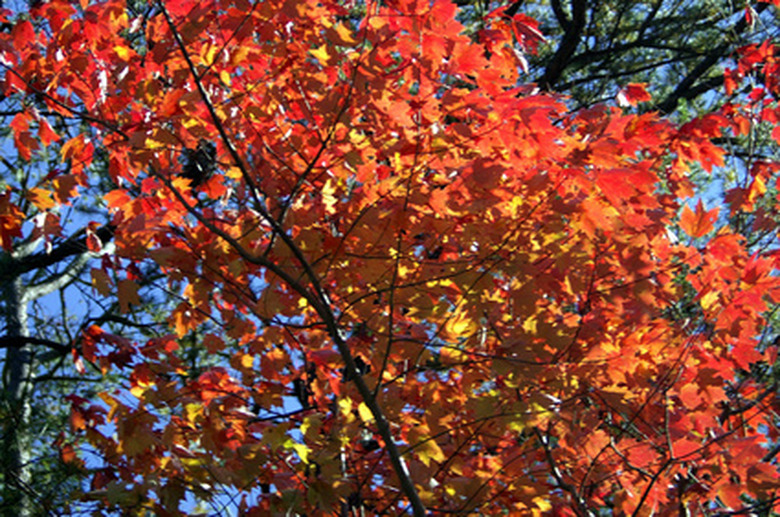What Maple Trees Are Toxic?
Three species of maple trees may have toxic leaves, according to studies conducted by Cornell University's Department of Animal Science. While red maple trees clearly cause problems for horses who eat their wilted or dried leaves, new studies show that silver and sugar maples also cause trouble. Enjoying the beautiful trees means planting and maintaining them far away from horses and other livestock who might eat their leaves and get sick.
Red Maple
Red maples remain popular thanks to their vibrant red autumn color. But by the time the season ends, fallen leaves and branches may contain heavy amounts of a toxin known as gallic acid. Gallic acid can kill horses, according to the Ontario Ministry of Agriculture's Food and Rural Affairs website. The problem occurs in wilting leaves lying on the ground or left on pruned branches. These leaves cause faster poisoning when they fall between June and October than do fallen leaves that came off the tree earlier in the summer. Studies show that the longer the leaf grows, the more toxic it becomes. When horses eat fresh red maple leaves, though, they do not experience problems, unless they eat too many of the fresh leaves, which can cause hemolytic disease, a blood condition. One way to identify red maples is to look at the leaves. The leaves have three lobes and the leaves are serrated on their edges. The underside of the leaf appears silver-gray. The trees grow up to 75 feet tall.
- Three species of maple trees may have toxic leaves, according to studies conducted by Cornell University's Department of Animal Science.
- While red maple trees clearly cause problems for horses who eat their wilted or dried leaves, new studies show that silver and sugar maples also cause trouble.
Silver Maple
Silver maple trees grow very fast and feature leaves with heavily indented lobes and serrated edges. The leaves appear green on top and silvery-white on the undersides. In the fall, silver maple leaves turn yellow. The trees grow up to 80 feet in height. The leaves and twigs contain gallic acid, capable of poisoning horses and other livestock. Leaves that have fallen off the tree or are still lingering on pruned branches can cause poisoning when ingested. Do not let livestock nibble at silver maple leaves that have fallen or that are lying on brush piles.
- Silver maple trees grow very fast and feature leaves with heavily indented lobes and serrated edges.
- Leaves that have fallen off the tree or are still lingering on pruned branches can cause poisoning when ingested.
Sugar Maples
Sugar maples stand out in the landscape with their brilliant fall colors. The slow- to medium-growing trees reach up to 75 feet in height. Sugar maples feature leaves with smooth edges that appear green in spring and summer and turn reddish-orange in the fall. According to Cornell University, horses in the eastern United States, where sugar maples are primarily grown, can suffer health problems after ingesting leaves from the sugar maple. Keep the leaves off of brush piles, and make sure the wind doesn't blow sugar maple leaves into an area inhabited by horses or other livestock.
